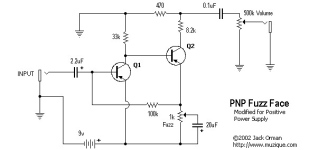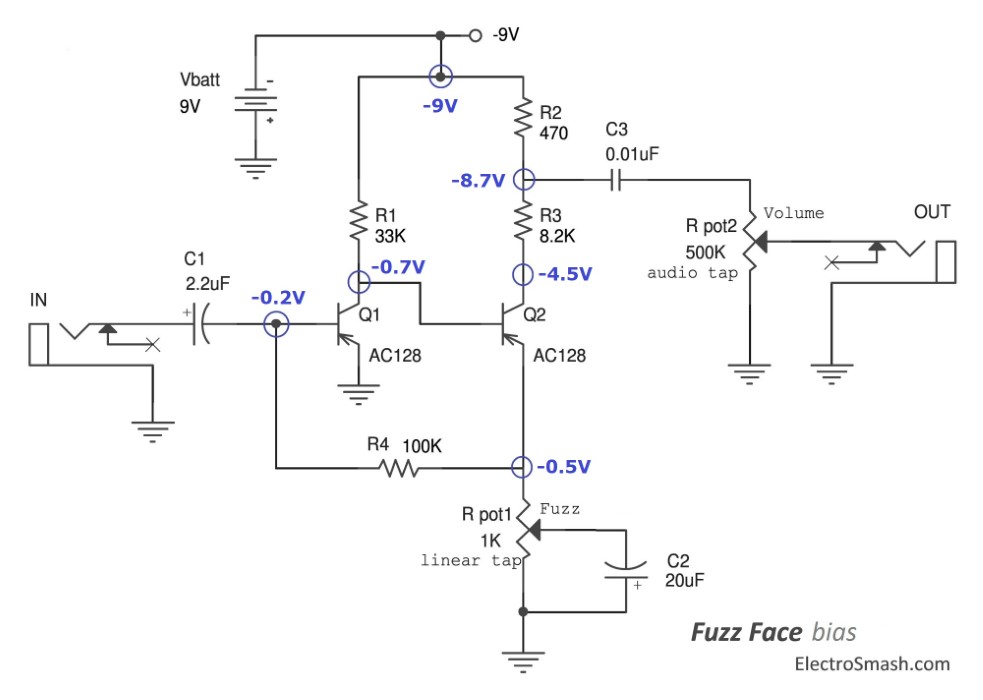MBFX
Well-known member
@Chuck D. Bones and @BuddytheReow helped me troubleshoot a Ge Fuzz Face build, and it's up and running on my breadboard! It isn't terribly fuzzy though - more of a dirty boost. I want to make use of these $10/piece transistors, so I'm going to stick a booster in front of them and make a Tone Bender. Simple, right?
I just want to make sure I am thinking of this correctly. I am using PNP Ge transistors with the Fuzz Face circuit "upside down", connecting the schematic grounds to power and vice versa, so I can use the PNP transistors with a center-negative power supply. I only have NPN Si available to make the input stage, so my plan is to pretend I am building two pedals. Each circuit will be complete, with its own input and output cap. The booster circuit and Fuzz Face circuit will be discrete but on the same board, with the output of one feeding into the input of the other. This should eliminate any problems using both PNP and NPN transistors on the same board.... right?
Have I accounted for the variables that would preclude using NPN and PNP transistors on the same board? I think that making them both use a center-negative power supply and isolating the circuits with their own input/output caps is a good start, but I don't know enough to know what else might be affected by doing this.
I just want to make sure I am thinking of this correctly. I am using PNP Ge transistors with the Fuzz Face circuit "upside down", connecting the schematic grounds to power and vice versa, so I can use the PNP transistors with a center-negative power supply. I only have NPN Si available to make the input stage, so my plan is to pretend I am building two pedals. Each circuit will be complete, with its own input and output cap. The booster circuit and Fuzz Face circuit will be discrete but on the same board, with the output of one feeding into the input of the other. This should eliminate any problems using both PNP and NPN transistors on the same board.... right?
Have I accounted for the variables that would preclude using NPN and PNP transistors on the same board? I think that making them both use a center-negative power supply and isolating the circuits with their own input/output caps is a good start, but I don't know enough to know what else might be affected by doing this.



